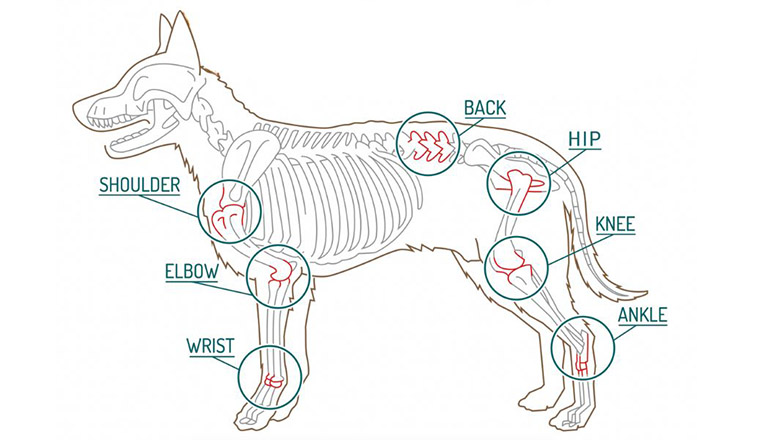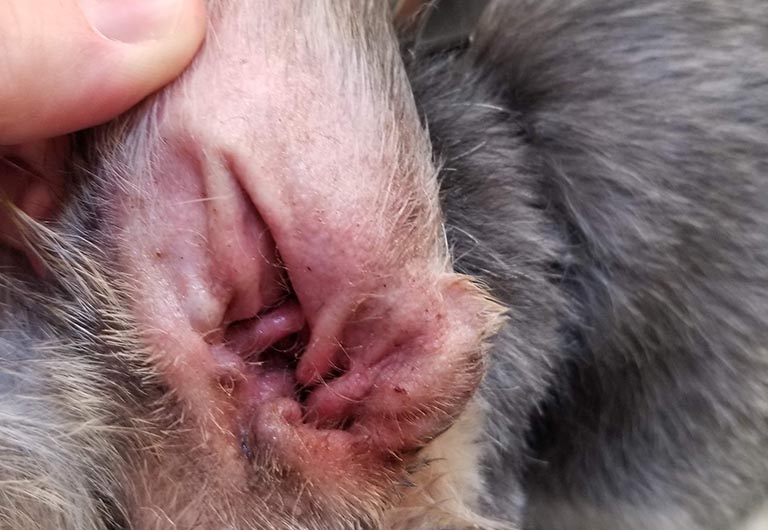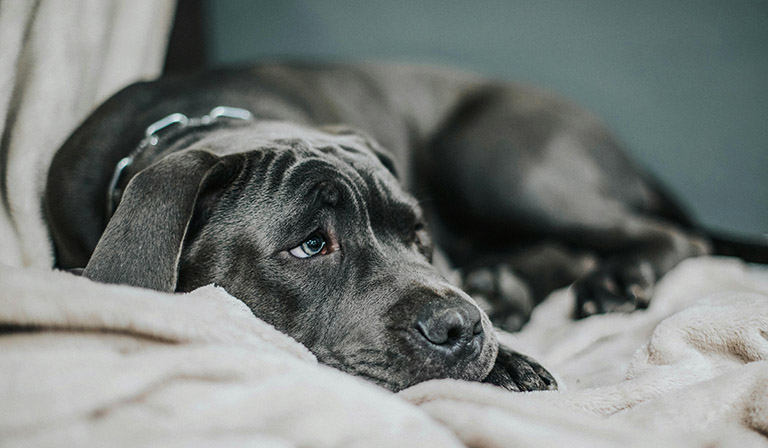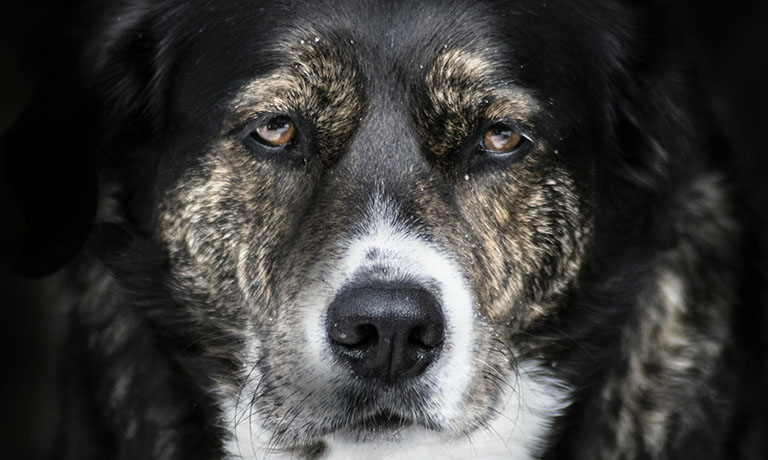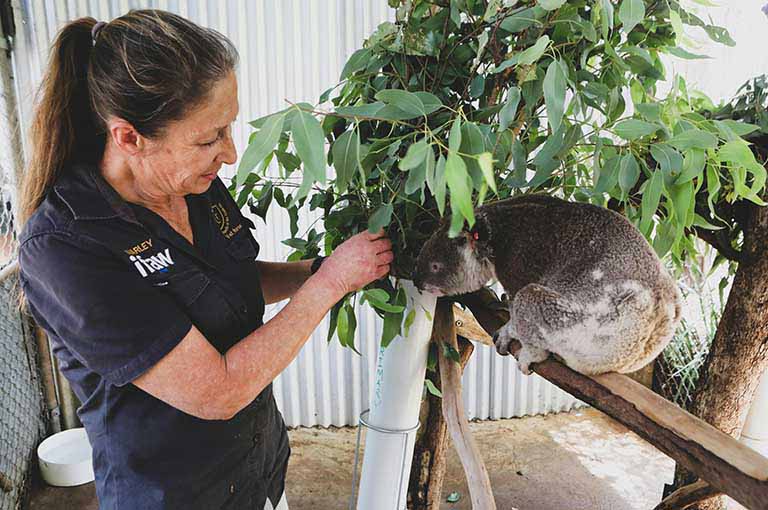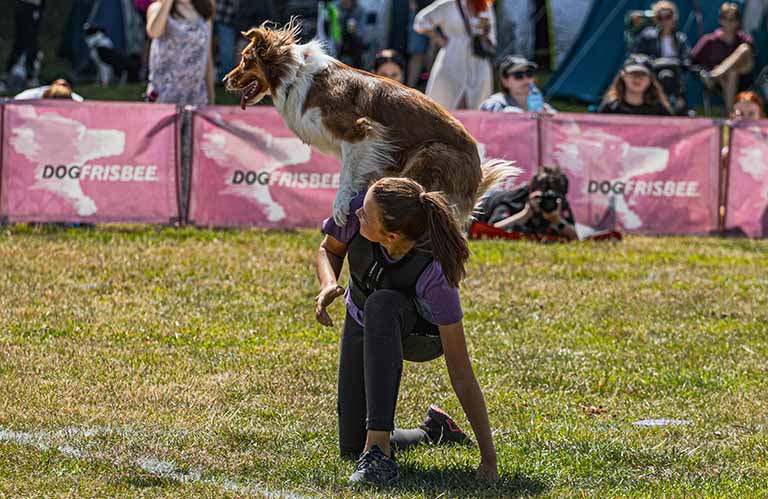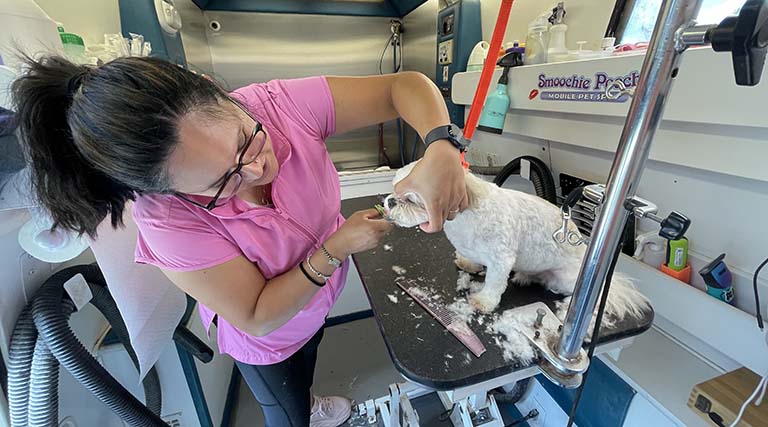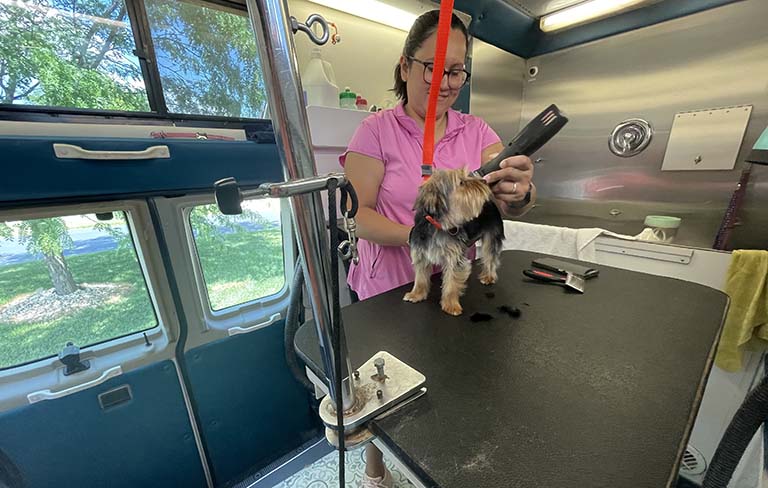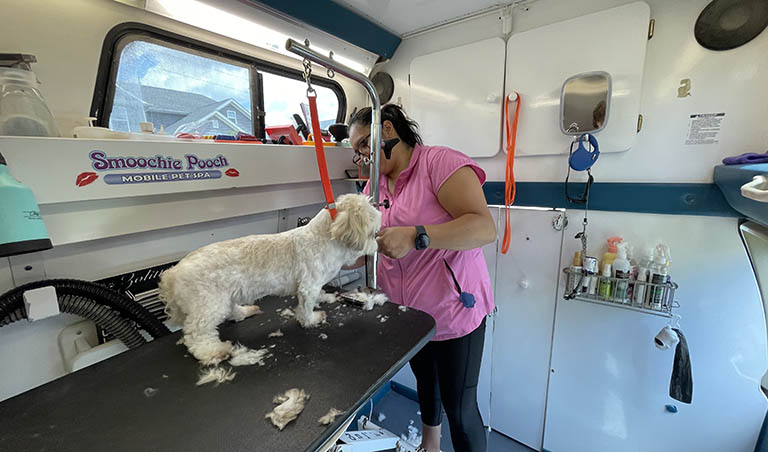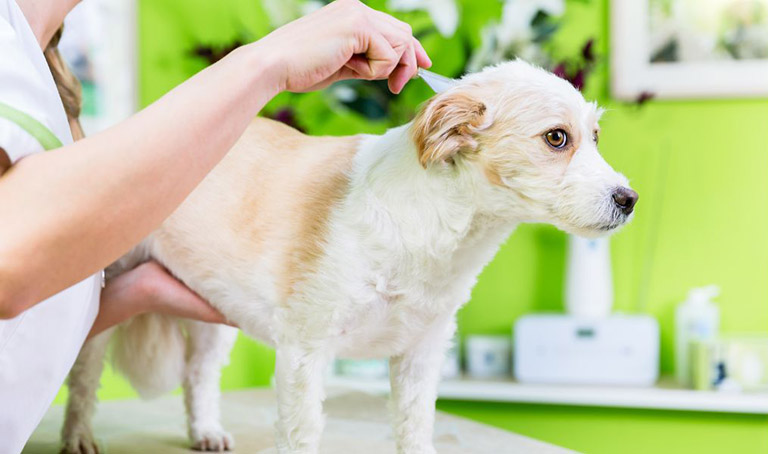Dogs face a variety of health challenges as they age, with diminished joint and hip health being among the most common. Conditions such as arthritis, hip dysplasia and general wear and tear can lead to pain, stiffness and decreased mobility, impacting their overall quality of life. Thankfully, pet owners can take proactive steps to support their dogs’ joint health through a combination of high-quality supplements, dietary choices and lifestyle adjustments. In this blog, we’ll explore the top hip and joint supplements available for dogs, discuss their benefits and offer tips for maintaining mobility and comfort in our furry companions.
As Dogs Age: Diminished Joint and Hip Health
Diminished joint and hip health is particularly prevalent in senior dogs and larger breeds, including German shepherds. Approximately 20% of dogs over a year old in the U.S. experience joint pain, leading to symptoms like limping, stiffness and muscle loss. If left unmanaged, these issues can develop into osteoarthritis, a degenerative condition affecting mobility and overall well-being.

Are Hip and Joint Supplements Good for Dogs?
Hip and joint supplements can be beneficial for dogs suffering from orthopedic conditions such as arthritis and hip dysplasia. While there’s no cure for these conditions, supplements can help manage symptoms, reduce inflammation and support cartilage regeneration. Ingredients like glucosamine, chondroitin and omega-3 fatty acids are commonly found in these supplements and can play a crucial role in maintaining joint health.
Do Hip and Joint Supplements for Dogs Work?
Evidence suggests that joint supplements can be effective in preventing the progression of arthritis rather than solely treating existing conditions. Many veterinarians recommend starting these supplements early, especially for breeds predisposed to joint issues. For best results, these supplements should be part of a comprehensive management plan that includes weight management, low-impact exercise and possibly anti-inflammatory medications.
When to Start Hip and Joint Supplements for Dogs?
It’s advisable to consider starting hip and joint supplements when your dog is around one year old, especially for highly active breeds. Early intervention may help prevent the onset of joint issues as they age. Consulting with a veterinarian will ensure the selected supplement is appropriate for your dog’s age, weight and specific needs.

What Are the Best Hip and Joint Supplements for Dogs?
There are several options when it comes to hip and joint supplements for dogs:
Hip and Joint Chews for Dogs
- Nutramax® Dasuquin® Hip & Joint Soft Chews for Large Dogs: Contains glucosamine, MSM and green tea extract to support joint health
- Virbac® MOVOFLEX® Soft Chews for Small Dogs: Features eggshell membrane and hyaluronic acid, making it suitable for dogs with food sensitivities.
Vet Recommended Hip and Joint Supplements for Dogs
- VetriScience® GlycoFlex® 3 Chews: Includes green-lipped mussels for added joint comfort.
- Nutramax® Cosequin® Soft Chews: Ideal for senior dogs, featuring glucosamine, MSM and omega-3s for joint and immune support.
Advanced Hip and Joint Supplement for Dogs
- Phycox® MAX Soft Chews: High in MSM, this supplement also contains antioxidants and turmeric to enhance joint health.
Hip and Joint Vitamins for Dogs
- Welactin® Omega-3 Fish Oil Softgels: Supports skin, coat and joint health through omega-3 fatty acids.
Natural Hip and Joint Supplements for Dogs
Both hemp and CBD supplements are available in various forms, including oils, treats, and capsules, allowing pet owners to choose the best option for their pets. When selecting a product, look for high-quality, third-party tested options to ensure safety and efficacy. For pet owners seeking natural alternatives to support their dog’s joint health, several options are available:
Hemp Hip and Joint for Dogs
Hemp-based supplements are becoming popular for their potential anti-inflammatory and pain relief benefits. Typically containing hemp seed oil or extract, they are rich in omega fatty acids, which promote healthy skin and coat while supporting joint health. The anti-inflammatory properties of hemp may also reduce swelling and discomfort related to conditions like arthritis.
CBD Hip and Joint for Dogs
CBD oil derived from hemp is a popular choice for managing joint pain and improving mobility in dogs. Unlike THC, CBD is non-psychoactive and does not produce a “high.” Many pet owners report that CBD alleviates pain and inflammation in dogs with arthritis and other joint issues. Additionally, it may promote relaxation and reduce anxiety, enhancing the quality of life for dogs with chronic pain. Always consult a veterinarian to determine the appropriate dosage and suitability for your dog’s needs.

Cat Hip and Joint
Cats also suffer from joint issues, and several supplements are available to support their health.
Cat Hip and Joint Supplement
Formulations specifically designed for cats can effectively help manage joint discomfort and promote mobility, ensuring your feline friend remains active and playful.
Hip and Joint for Cats
When choosing a hip and joint supplement for your cat, opt for high-quality products containing key ingredients. Glucosamine helps maintain cartilage and rebuild joint tissue, benefiting older cats or those with joint issues. Omega fatty acids, sourced from fish oil or flaxseed, reduce inflammation and promote healthy skin and coat. Additional ingredients like chondroitin and MSM enhance joint health, while turmeric offers natural anti-inflammatory benefits.
Consult your veterinarian to find the right product and dosage. Regular use can improve mobility and enhance your cat’s quality of life.

Best Dog Food for Hip and Joint
A well-balanced diet is essential for joint health. Look for dog foods enriched with joint-supporting nutrients, including omega-3 fatty acids and glucosamine.
Best Hip and Joint for Large Dogs
Larger breeds like German shepherds are particularly prone to joint issues. Supplements specifically formulated for their size and weight can help support their joint health.
Best Hip and Joint Supplement for German Shepherd
Consider brand options like Nutramax, Dasuquin, VetriScience or GlycoFlex, as they have products that provide comprehensive support tailored for larger breeds.

Dog Hip and Joint Care
Healthy Weight: Keeping your dog at a healthy weight reduces stress on their joints, which is especially important for breeds prone to hip and joint issues.
Low-Impact Exercise: Engaging in low-impact activities like walking, swimming or gentle play helps strengthen muscles around the joints without causing excessive strain, promoting overall joint health.
Comfortable Living Environment: Creating a comfortable living space with soft bedding and easy access to favorite areas can make a big difference in your dog’s comfort level and mobility.
Hip and Joint Pain Relief for Dogs
In addition to supplements, your veterinarian may recommend anti-inflammatory medications and physical therapy to provide relief from hip and joint pain.
Anti-Inflammatory Medications: These medications can help reduce swelling and discomfort, allowing your dog to move more freely. Your vet will determine the most suitable options based on your dog’s specific condition and needs.
Physical Therapy: Physical therapy can also be beneficial, offering tailored exercises and techniques to strengthen muscles, improve mobility, and enhance overall joint function. Your vet may refer you to a certified animal rehabilitation specialist who can create a personalized treatment plan.

Best Hip and Joint Supplement for Senior Dogs
For senior dogs, supplements that include glucosamine, omega-3 fatty acids and antioxidants can help improve mobility and overall comfort.
Pain-Free Mobility: Hip and Joint Support for Dogs
Caring for your dog’s hip and joint health is essential for ensuring their comfort and mobility as they age. By incorporating high-quality supplements, maintaining a balanced diet and encouraging low-impact exercise, you can significantly enhance your dog’s quality of life. Whether you opt for traditional options like glucosamine and omega-3 fatty acids or explore natural alternatives such as hemp and CBD, it’s crucial to choose the right products tailored to your dog’s specific needs. Always consult your veterinarian before starting any supplement regimen to ensure safety and effectiveness. With the right approach, you can help your furry friend stay active and vibrant, enjoying their golden years to the fullest.


